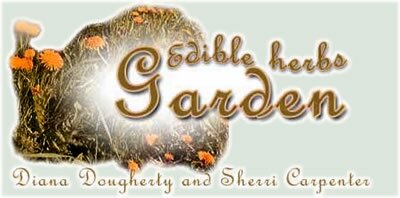|

Dandelion
Taraxacum officinale
Uses
leaves, roots, flowers. Fresh or dry
Healing
Stimulates bile production from the liver. A good over all tonic that helps to cleanse and strengthen the body. It contains all the nutritive salts that are required for the body to purify the blood (good for anemia) A slight appetite stimulant. A hepatic herb, which works well on the liver by toning it, nourishing it and strengthening it. Also good for the bladder, spleen, pancreas, stomach, and intestines.
Nutrition
A great source for potassium. Leaves contain 7,000 units of vitamin A per ounce. Also an excellent source for vit. B, C and G (B2). The flowers are one of the better sources for lecithin.
Cultivation
Dandelion requires a long growing season. Sow seeds 1/4 to 1/2 inch deep in May to early summer and thin seedlings to 8 to 12 inches apart. Will grow in any well- drained garden soil. Harvest before plants form flower stalks to avoid the bitter taste of the leaves. Feed young leaves fresh as the older leaves can be bitter.
Comments
Since it is a diuretic, do not use on a continuous basis.
Dandelions are herbs but they are also cleansing greens whose leaves and flowers can be added to your birds diet, especially the first thing in the spring. You may have tried to dig them out of your yard to get rid of them only to have them come right back in the same place, right? That's because you didn't go deep enough to get the whole root and it would be easier to get someone in China to pull it through to their country than it would to try to did it out. That's good news now that you will be learning how wonderful and beneficial they are to, not only your birds, but to all your other pets and the humans in your home. If you are transplanting them, dig down only about 2 or 3 inches below the crown (main part) of the plant. That will leave a nice root to regrow and still give you enough to get started where you want them to be. The ideal situation is to let them grow right where they are but that isn't always possible. Be sure if you transplant them from somewhere else, they haven't been sprayed with pesticides or plant killers. If they got fertilized along with the lawn, it's ok, just don't use them after transplanting for about a month or so and that will give the fertilizer plenty of time to leave. They will grow in just about any soil or sun conditions you put them in so that makes it a lot easier to have lots of leaves, blossoms and roots to work with.
Seed or plant sources.
www.johnnyseed.com
www.outdoortuff.com
www.gardenmedicinals.com
Chickweed
Stellaria media, Stellaria pubera, Cerastium vulgatum
Uses
Parts used - stems, leaves and seed
eaten raw, cooked, dried or steamed.
Healing
Helps to remove plaque out of the blood vessels and eliminates fatty substances in the system. Aids in upset stomach and helps to strengthen the bowels. Contains steroidal saponins that are responsible for its ability to increase the absorptive ability of all membranes, and to eliminate congestion. Nutrients become more readily available to every cell, liver and kidneys and lungs become healthier. Helps to clear blockages and waste from kidneys and gallbladder and congestion from lungs. Drinking a chickweed infusion for several days to a few weeks will help clear up skin problems by cleansing the blood and kidneys. A fresh poultice will bring down swelling from sprains, arthritis, and gout. Works best in small areas like wrists and fingers.
Nutrition
It provides plenty of vitamin C, rutin, biotin, choline, insoitol, PABA, vitamin B6, B12, vitamin D, and beta carotene. It is also an excellent source of magnesium, iron, calcium, potassium, zinc, phosphorus, manganese, sodium, copper and silicon. Contains gamma linolenic acid an omega-6 fatty acid derivative.
Cultivation
Prefers it cool and moist. It's best growing times are in the spring and fall and may dry up or go dormant in a hot summer.
Comments
Comments - Chickens and young chicks are said to like this plant and also the seeds. The leaves fold up at night.
Seed or plant sources.
http://www.serve.com/teaherbfarm/cart/
|